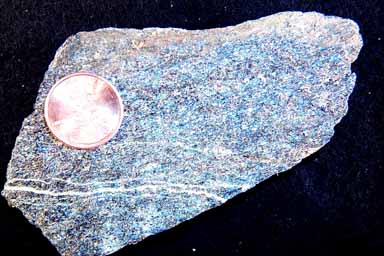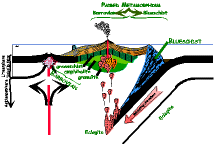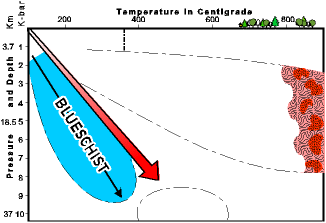|
BLUESCHIST #1 Glaucophane schist - Other specific examples: #1 | #2 | #3 | #4  Detail of this specimen
Detail of this specimen
Return to: Alphabetical Listing Basic Key Advanced Key |
|||
Composition
|
Description
Lineated schistose foliation produced by the lining up of elongate amphibole (var. glaucophane) crystals; seen trending lower left and upper right in this image. This is often a nondescript rock, easily confused with other rocks, especially amphibolite or various kinds of other schists. Aside from identifying the specific minerals, the most distinctive feature is the bluish color, although it often verges on black (making it even more confusing with amphibole). The bluish color is not always easy to see, however, especially under fluorsecent lights.The color in this image is exaggerated; in hand specimen it looks much more black, although in the right light the distinct blue color comes through. |
||
Tectonic Association
Amphibolite is associated with major mountain building events when mafic igneous rocks (basalts or gabbros) are metamorphosed through depth of burial, and proximity to batholiths (click picture for larger version).

|
Type of Metamorphism
 |
||